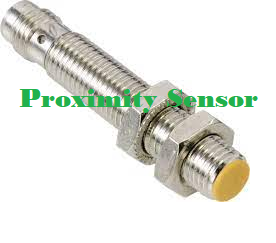
Proximity sensors are devices that detect the presence or absence of an object within their sensing range without making physical contact. They are widely used in various industries and applications, such as automation, robotics, security systems, and more. Here are some common types of proximity sensors:
- Inductive Proximity Sensors: These sensors use electromagnetic fields to detect metallic objects. When a metallic object enters the sensing range, it disrupts the electromagnetic field, triggering the sensor to detect its presence.
- Capacitive Proximity Sensors: Capacitive sensors work by measuring changes in capacitance. They can detect both metallic and non-metallic objects. When an object enters the sensing range, it changes the capacitance of the sensor, indicating its presence.
- Ultrasonic Proximity Sensors: Ultrasonic sensors emit ultrasonic waves and measure the time it takes for the waves to bounce back after hitting an object. By analyzing the reflected waves, the sensor can determine the distance and presence of an object.
- Photoelectric Proximity Sensors: These sensors use light to detect the presence or absence of an object. They emit a light beam and measure the amount of light received. If the beam is interrupted by an object, the sensor detects the presence of that object.
- Magnetic Proximity Sensors: Magnetic sensors use magnetic fields to detect objects. They are commonly used to detect ferrous materials. When a ferrous object enters the magnetic field, it affects the sensor’s output, indicating the presence of the object.
- Hall Effect Proximity Sensors: Hall effect sensors rely on the Hall effect, which is the production of a voltage difference across an electrical conductor when it is subjected to a magnetic field. These sensors can detect the presence of magnetic fields and are often used in applications such as position sensing.
- Laser Proximity Sensors: Laser sensors use laser beams to detect the presence of objects. They emit a focused laser beam and measure the reflected light. If the reflected light intensity changes, indicating an object is present, the sensor detects it.
These are some of the commonly used proximity sensor types, each with its own working principle and suitable applications. The selection of the sensor type depends on the specific requirements of the application, such as the target object, sensing range, environmental conditions, and desired accuracy.
When selecting a proximity sensor for a specific application, several factors should be considered to ensure the sensor meets the requirements and performs optimally. Here are some key factors to consider:
- Sensing Range: Determine the required distance at which the sensor needs to detect objects. Consider both the minimum and maximum sensing range to ensure the sensor can operate effectively within the desired range.
- Object Characteristics: Understand the properties of the objects to be detected, such as material composition (metallic, non-metallic), size, shape, and surface finish. Certain sensors are better suited for detecting specific object types.
- Environmental Conditions: Consider the environmental factors the sensor will be exposed to, such as temperature, humidity, vibration, and presence of dust, dirt, or liquids. Ensure the sensor is rated to withstand these conditions and maintain reliable operation.
- Output Type: Determine the preferred output type for the application. Proximity sensors can provide various output types, including digital (on/off), analog (continuous measurement), or a combination of both. Choose the output type that best suits the application’s requirements.
- Response Time: Evaluate the required response time of the sensor. Some applications may require fast response times to detect rapidly moving objects, while others may have more relaxed timing requirements.
- Power Supply: Consider the available power supply and voltage requirements of the sensor. Ensure compatibility with the existing power infrastructure or plan for necessary modifications.
- Mounting and Installation: Assess the physical constraints and available space for mounting the sensor. Consider the sensor’s size, shape, and mounting options to ensure easy and secure installation.
- Cost: Consider the budget constraints and the overall cost of the sensor. Evaluate the sensor’s price in relation to its features, performance, and durability.
- Reliability and Durability: Assess the reliability and durability of the sensor, especially if the application involves harsh environments, heavy-duty usage, or critical operations. Look for sensors with appropriate IP (Ingress Protection) ratings and quality certifications.
- Application-specific Requirements: Take into account any specific requirements of the application, such as integration with other systems, compatibility with existing equipment, or compliance with industry standards or regulations.
By considering these factors, you can select a proximity sensor that best matches the requirements of your specific application, ensuring accurate and reliable object detection.
